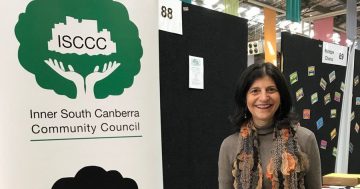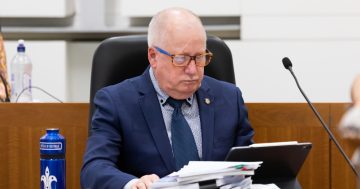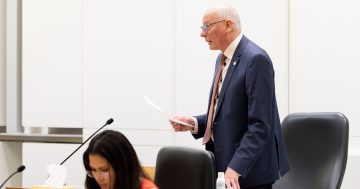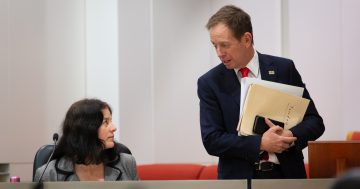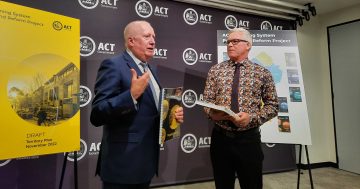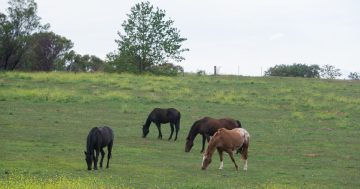
A leafy streetscape in the suburb of Griffith. Concerns are rising about the future of Canberra’s green verges. Photo: Region Media.
A community council is calling on the ACT Government to commit to ongoing investment in streetscapes and green spaces across Canberra, with the COVID-19 shutdown highlighting just how important they are to the community’s health and wellbeing.
Backed by a survey of residents showing how much streetscapes and open green spaces are valued, the Inner South Canberra Community Council said the government needs to ensure these areas do not fall away or deteriorate.
Council chair Marea Fatseas says these spaces need to be maintained and renewed regularly, and be considered important parts of new developments.
”These streetscapes and open green spaces are proving to be more important now than ever, and they have become an essential ingredient in making life more bearable for Canberrans during the COVID-19 lockdown,” she said.
”These same spaces are also essential in providing cool, green sanctuaries during our increasingly hot summers and for our community’s future resilience and wellbeing.”
Ms Fatseas said the online survey taken before the COVID-19 crisis revealed 71 per cent of respondents highly value the street trees, vegetation, gardens and wide streets that comprise the streetscapes of Inner South suburbs, and 69 per cent also highly value recreation spaces such as parks, ovals and bushland.
She said these results, combined with results from the government’s own Better Suburbs Statement surveys, confirmed how high a value the people of Canberra placed on streetscapes and open green spaces.
The survey, which used the same questions as a 2003-2004 government community consultation, also showed how increasingly concerned people were about streetscapes.
Ms Fatseas said streetscapes hardly rated in the survey back then, but they are now more highly valued than open space, probably reflecting the increase in the volume of apartments in Canberra at the expense of detached dwellings.
The council will continue to advocate for urban planners to pay close attention to these areas in the design of new developments and redevelopments in Canberra’s Inner South, she said.
“We also know from ACT Government-commissioned research that suburbs with significant tree canopy cover are several degrees cooler in summer than suburbs with low canopy cover.
“During the COVID-19 lockdown, the increased number of people accessing the wonderful green parks and spaces within walking distance from their homes has proved vital for our physical and mental wellbeing during this stressful time.”
Ms Fatseas welcomes the government’s fast-tracked urban infrastructure projects designed to keep Canberra working through COVID-19, but wonders how much of the $9.75 million spend is going towards the upkeep of open green spaces in the Inner South.
Survey respondents highlighted many areas of value such as Telopea Park in Kingston; Jerrabomberra Wetlands; Bowen Park in Barton; La Trobe Park in Deakin; Collins Park in Forrest; Manuka Pool and Manuka Oval; Blaxland Park; parkland and ovals along Captain Cook Crescent; remnant woodland adjacent to La Perouse Street; and Bass Gardens in Griffith.
Also rating mentions were the open space between Matina Street and Jerrabomberra Creek, and Rocky Knob Park, both in Narrabundah; as well as the Red Hill Nature Reserve and Voyager Park in Red Hill; Weston Park; Stirling Park; and woodland near Yarralumla Brickworks.












